When you think of Mykonos, wild parties and beach clubs probably pop into your head first. But honestly, there’s so much more to this famous Greek island than just nightlife.
Beyond the lively nightlife, Mykonos brings together chic glamour, untouched hidden beaches, and a traditional heart that still beats quietly among the busy streets and sparkling shores.
As I wandered through charming Cycladic villages, I stumbled upon cozy family-run tavernas and narrow alleys where locals greet each other by name. Far from the main crowds, secret coves and tranquil stretches of sand along the Aegean Sea became my favorite escapes, offering some of the best views in the Cyclades.
I didn’t expect it to be so easy to slip away from the high-energy spots and get a taste of real island life. The mix of luxury, local culture, and those lesser-known beaches really makes Mykonos more than just a party destination.
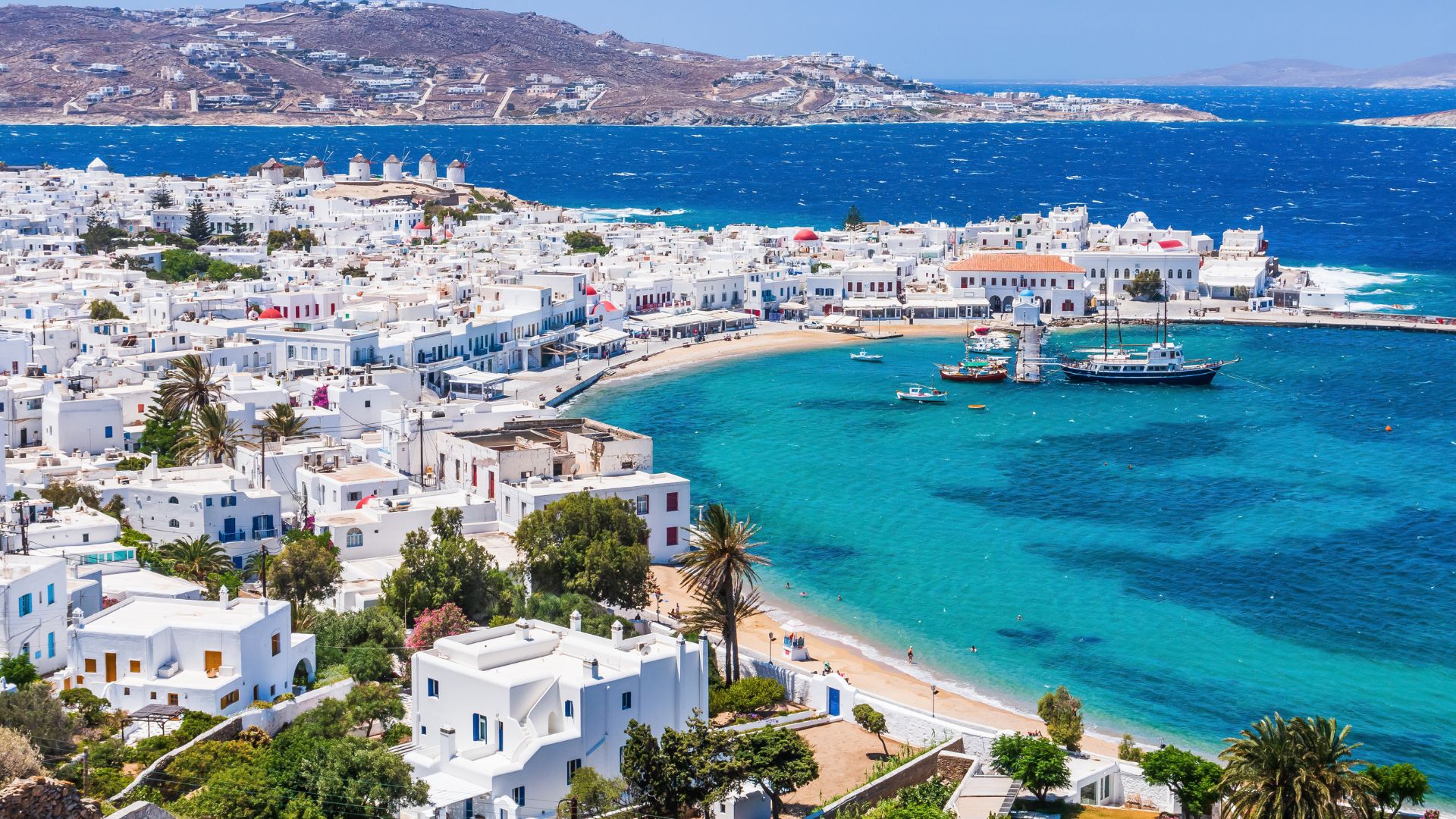
The Allure of Chic Glamour in Mykonos
Chic glamour runs through daily life here. Upscale beach clubs sit right on golden sand, while stylish hotels gaze out over the sea. Glamour and elegance blend effortlessly with Greek tradition.
Elegant Beach Clubs and Vibrant Nightlife
My first afternoon, I headed to Psarou Beach, which everyone seems to know for its upscale vibe. The sand almost sparkles, and designer sunbeds line the water’s edge. By mid-afternoon, music from the famous beach clubs picks up.
Nammos stood out to me—there’s a lively mix of relaxed lounging and a high-energy scene by sundown.
When the sun goes down, Mykonos Town lights up. I started my night with cocktails at a sleek rooftop bar, looking out over whitewashed buildings and winding lanes. Later, I wandered into Kalo Livadi, where hidden beach clubs pulse with music under the stars.
Nightlife here isn’t just big parties. I found myself bumping into new friends, sharing local wine, and soaking up the energy that sweeps across the island every night.
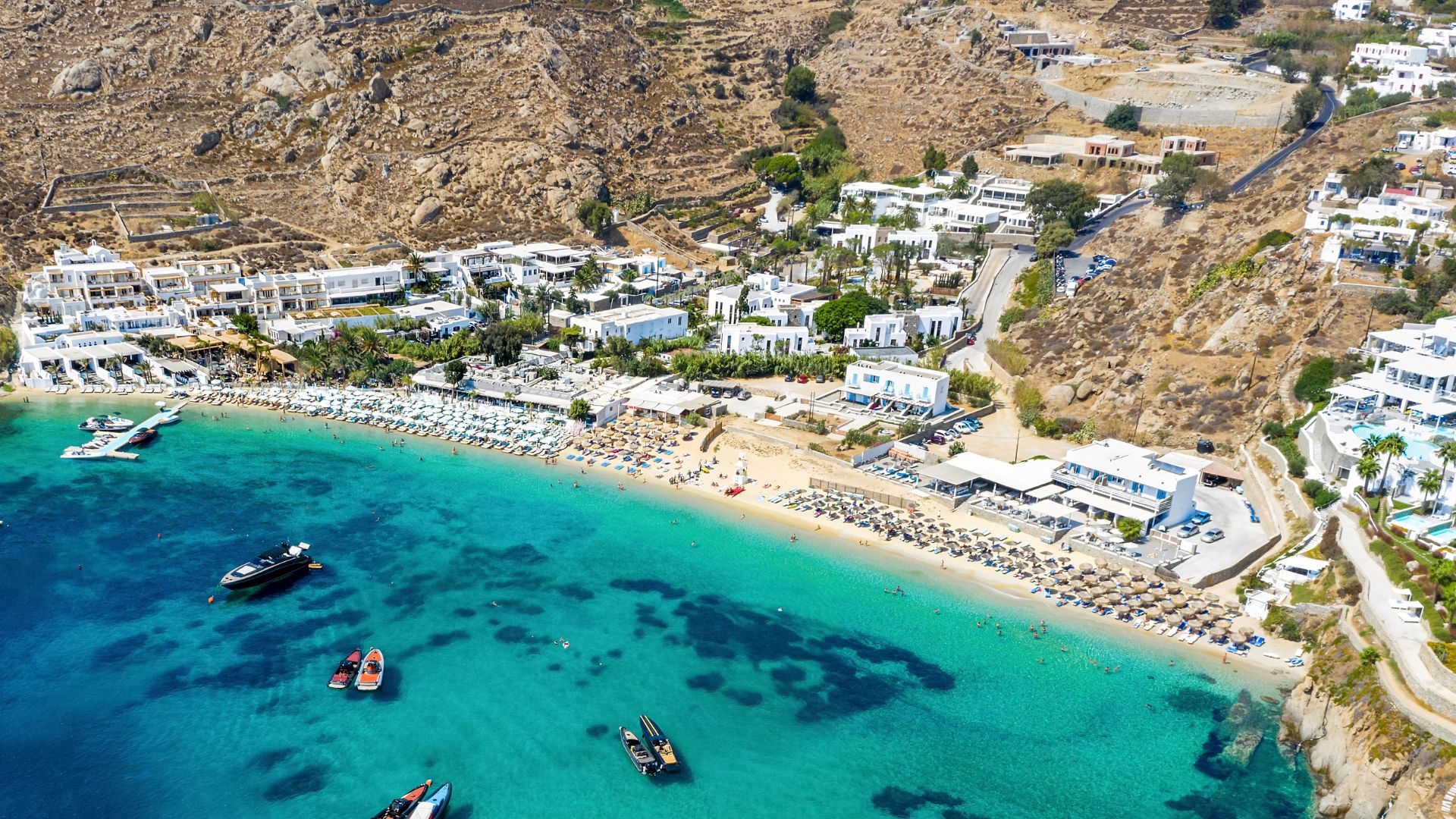
Boutique Hotels and Luxury Retreats
Waking up to Aegean views from my balcony at Mykonos Blu near Psarou felt unreal. Many hotels here focus on privacy and personalize almost everything, from your morning coffee to a late-night dessert.
Crisp white-and-blue designs make every space feel sunlit and calm.
At Katikies, perched above Agios Ioannis beach, I got that “Greek island experience” people dream about—just enough seclusion but still close to postcard-perfect beaches.
Boutique hotels in Mykonos usually keep the room count low, so each guest feels special. Amenities often include private pools, spa treatments, and locally-inspired breakfasts.
No two properties are the same; each one tells a different story about the island, blending tradition and luxury.
Exclusive Dining and World-Class Cuisine
Dining in Mykonos surprised me. Along Psarou Beach, I tried fresh seafood at a restaurant right above the water. The menu mixed classic Greek recipes with creative twists, so every meal felt comforting but a little exciting, too.
Places like Kalo Livadi are known for gourmet restaurants using local ingredients—think grilled octopus, golden sand under your feet, and the sound of waves nearby.
In Mykonos Town, narrow streets hide upscale dining spots where chefs serve up beautiful plates bursting with flavor. I saw both visitors and locals enjoying long, late dinners.
From Mediterranean tasting menus to world-class sushi, the food scene here makes it easy to find something memorable and distinctly Mykonian.
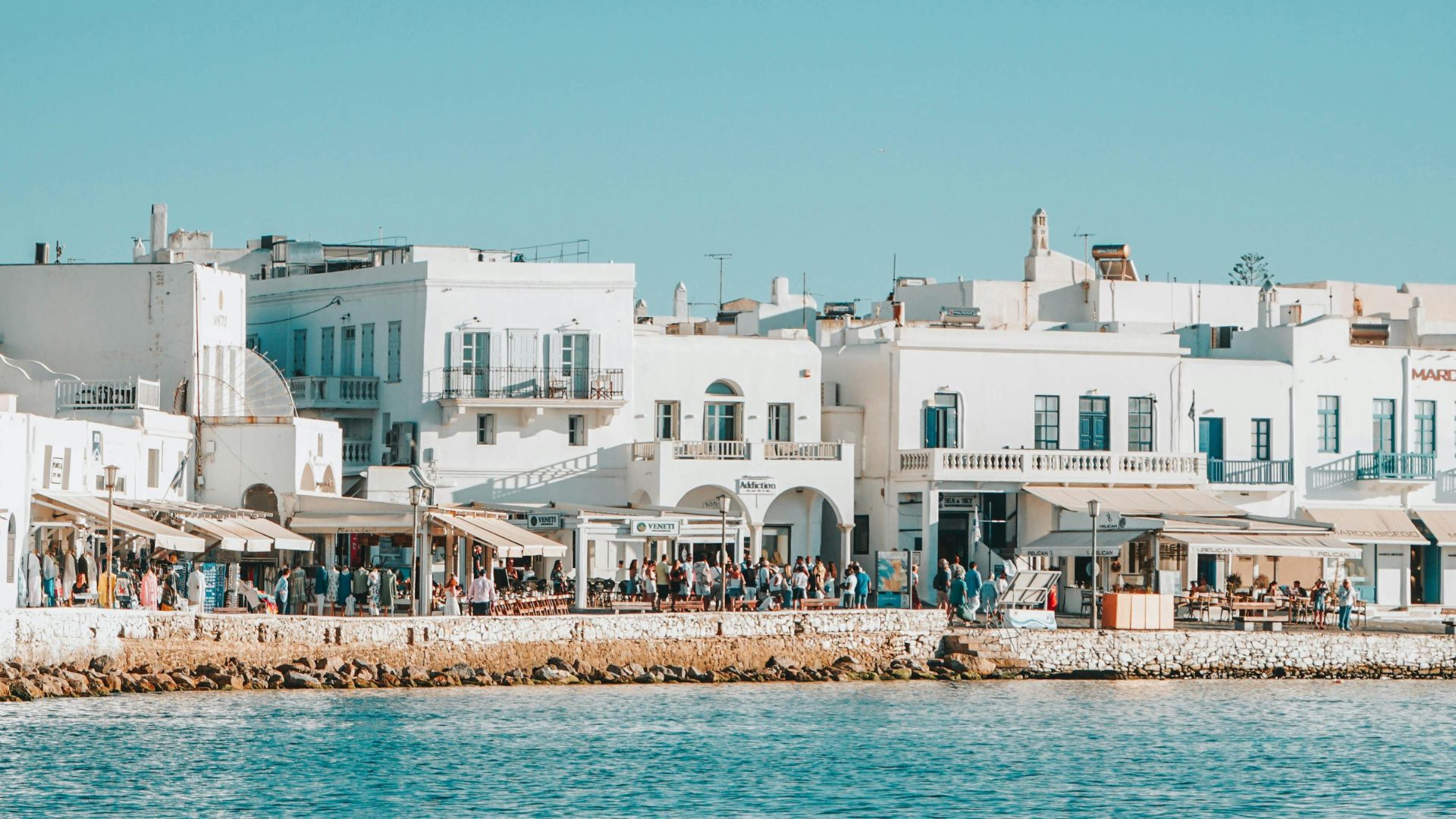
Discovering Hidden Beaches and Coastal Gems
Mykonos is known for its lively beach clubs and nightlife, but if you look a little harder, you’ll find quieter, peaceful beaches. I spent days wandering the coastline, searching for those rare spots where the crowds melt away and the ocean takes over.
Secluded Shores Off the Beaten Path
Some beaches hide behind rugged hills or sit just a short drive from Mykonos Town. One of my favorites is Agios Sostis—no loud bars, no sunbed rentals, just golden sand and space to stretch out.
Another one, Fokos Beach, sits at the end of a dusty, winding road. The water here is clear and cool, and the area stays peaceful even in the middle of summer.
I’ve seen a few locals picnicking, and sometimes horses wander along the shore.
If you want a more low-key, family-friendly spot, Agios Stefanos is a good pick. It’s close enough to the main port to be convenient, but quiet enough to enjoy a calm swim or watch fishing boats come and go.
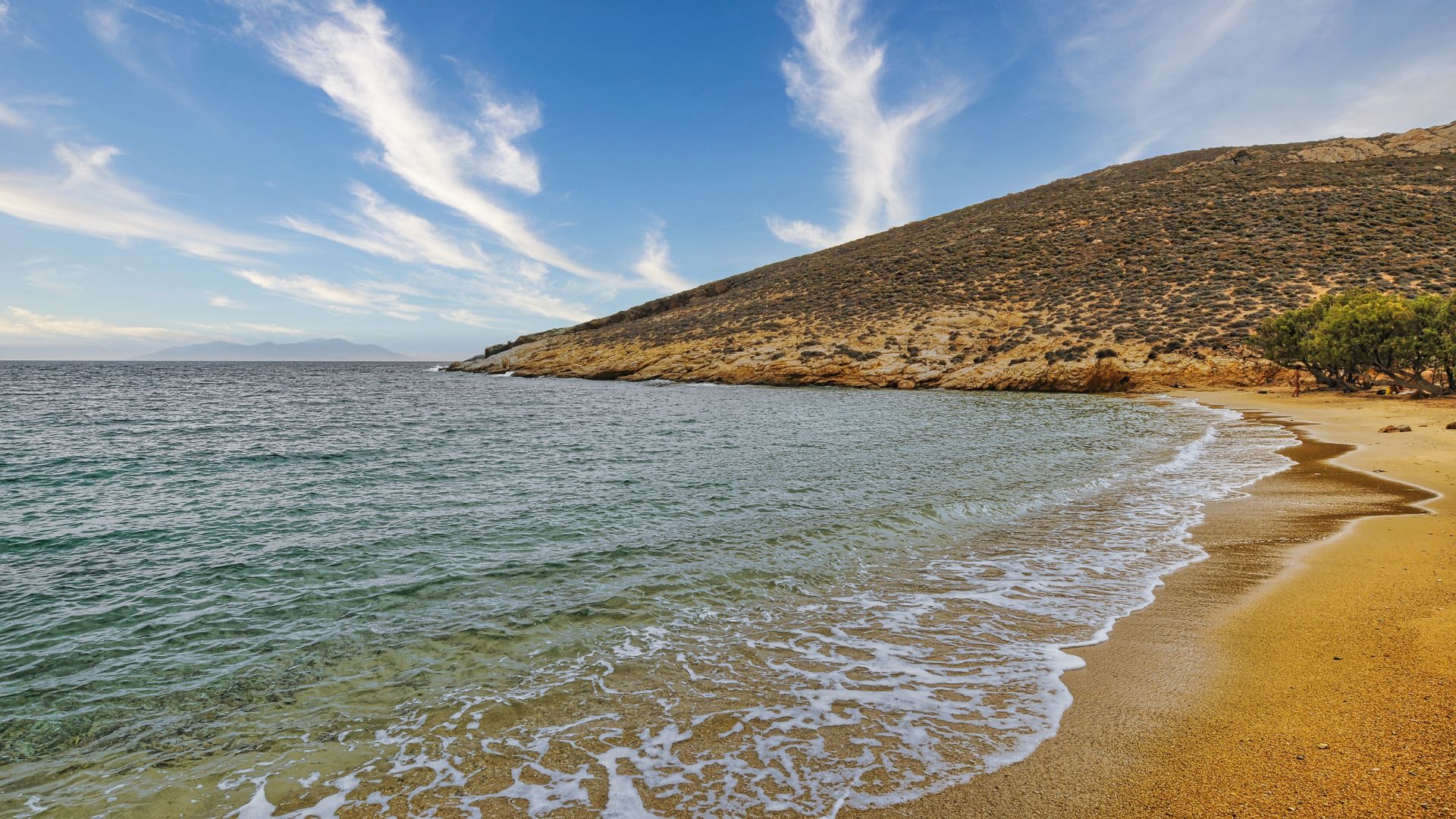
Crystal-Clear Waters and Golden Sand Escapes
Mykonos really delivers when it comes to clear, sparkling water. Some beaches almost look untouched, with sand glowing in the afternoon sun.
Ftelia Beach is one of my top picks for peace and beauty—a place with sweeping views, smooth pebbles, and hardly any people, even in busy months.
Ornos Beach is better known, but it still keeps a mellow vibe if you go early. I like grabbing a coffee here and strolling along the surf, watching tiny fish dart in the shallows.
For swimming or just dipping your toes, the water at these beaches is almost always calm. The mix of golden sand, turquoise waves, and gentle breezes makes these spots feel extra special.
Secret Coves Only Locals Know
A few hidden gems stay so under the radar that even regular visitors miss them. Locals told me about a small cove at Kapari Beach—there’s no sign, just a footpath between rocks, but it’s worth the short hike.
Sometimes I’ll stumble on a stretch of sand with just a fisherman or two nearby. These places remind me Mykonos isn’t just about the party scene; nature still feels wild here.
It’s easy to lose track of time, watching the light change on the water or collecting shells the tide brings in.
A local once pointed me to a pebble beach beyond Merchia. Getting there wasn’t easy, but the silence and the sound of waves made it a true hidden treasure.
A Surprising Traditional Heartbeat
When I explored Mykonos beyond the famous nightlife, I found an island full of charm, authenticity, and deep-rooted tradition. There’s this hidden side in the winding streets, the timeless celebrations, and the local shops you might miss if you’re only here for the parties.
Charming Villages and Local Culture
Mykonos Town—locals call it Chora—charmed me with its narrow, maze-like streets, whitewashed houses, and blooming bougainvillea. The town’s quiet squares, colorful doors, and church domes create a peaceful setting, especially early in the morning.
Outside the main town, I found villages like Ano Mera, where neighbors gather in bakeries and tavernas. Life moves slowly here. People greet each other by name and share stories over grilled octopus or fresh bread.
A short ferry to Tinos—another Cyclades island—showed me old stone villages that seem untouched by time.
Local churches and chapels, hundreds across the island, shape daily life. Blue domes and white walls stand out against the Aegean Sea.
Every so often, I’d stumble upon a baptism or a saint’s day celebration, proof that tradition lives on here.
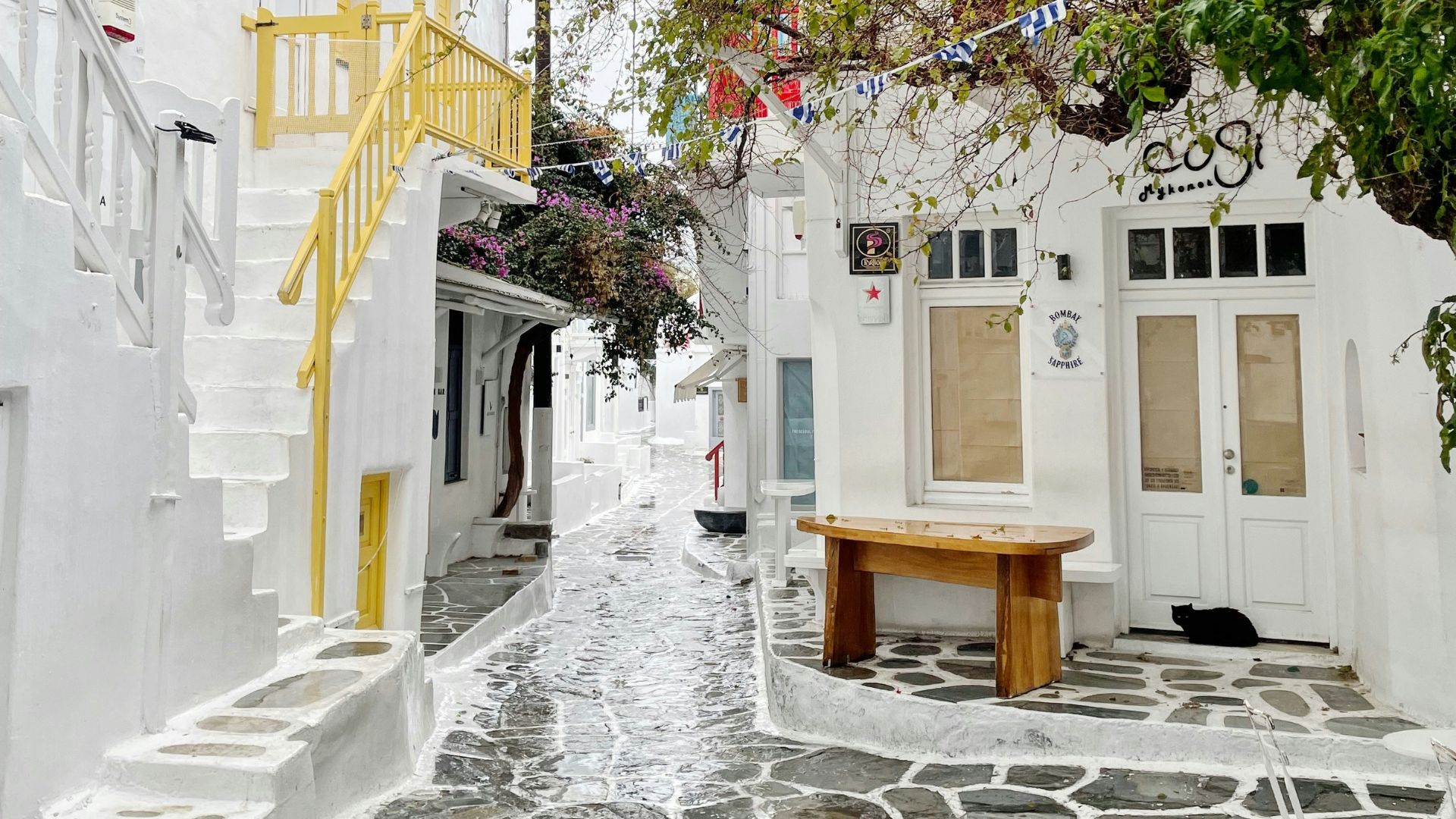
Traditional Festivals and Folklore
Traditional festivals changed the way I saw Mykonos. Greek Orthodox holidays like Easter fill the island with processions, candlelight, and music.
Locals sometimes invite travelers to join, sharing homemade sweets and singing folk songs.
In Ano Mera, I joined a summer panigyri—a village festival for a patron saint. Big tables in the square overflowed with food: louza (local ham), cheese, and sweet almond pastries.
Dancers in Cyclades costumes stepped to the sound of live bouzouki.
These festivals pull together the best of the Greek islands—community, tradition, and open doors.
Stories and legends get passed down, connecting everyone through song and laughter late into the night.
Authentic Markets and Artisan Shops
Mykonos Town’s morning market was a highlight for me. I browsed stalls full of sun-dried herbs, olives, and handwoven baskets. The air smelled of local cheeses and fresh sesame bread.
Here, I felt connected to the island’s farmers and fishermen, some whose families have worked these stalls for generations.
Wandering side streets, I found workshops selling pottery, leather sandals, and delicate gold jewelry. Many artisans welcome visitors like old friends, explaining how they make each object using Cycladic methods.
Buying a handmade ceramic or embroidered linen isn’t just shopping—it’s like taking home a piece of the Cyclades’ past.
Across Mykonos, these markets and shops support local families and keep the island’s unique culture alive.
Collecting simple souvenirs felt special, knowing each one told a story about the traditions still thriving here.

Island-Hopping and Cultural Heritage
Mykonos offers more than beaches and parties. You’ll find history, stunning nearby islands, and legendary ruins all within easy reach.
Exploring Ancient Delos and Mythical History
Just a short boat ride away, Delos stands as one of the most important archaeological sites in Greece.
Stepping onto Delos, I felt like I’d traveled back two thousand years.
The whole island is a UNESCO World Heritage Site, once considered the birthplace of Apollo and Artemis.
Walking among the marble ruins, I saw the famous Terrace of the Lions, intricate mosaics, and ancient temples.
Delos feels peaceful—even mysterious.
They only let visitors in during the day, and no one stays overnight, which helps keep that sense of untouched history.
If you’re visiting Mykonos, don’t skip a morning tour to Delos. It’s the Cyclades’ secret treasure for history lovers.

Easy Getaways to Cycladic Neighbors
Island-hopping from Mykonos is a breeze, thanks to fast ferries and regular sailings connecting the Cyclades.
Santorini, with its blue-domed churches and breathtaking caldera views, makes a great day trip or overnight escape.
It’s hard to resist those volcanic beaches and sunsets.
Naxos and Paros are close by, too. Naxos offers green valleys and the impressive Portara, the doorway to an ancient temple.
Paros charms with quiet villages and beautiful sandy coves.
A short trip to Milos let me see the famous Venus de Milo site, adding another layer of history to my travels.
Ferries run often, and tickets are easy to book, so each island adventure feels refreshingly stress-free.
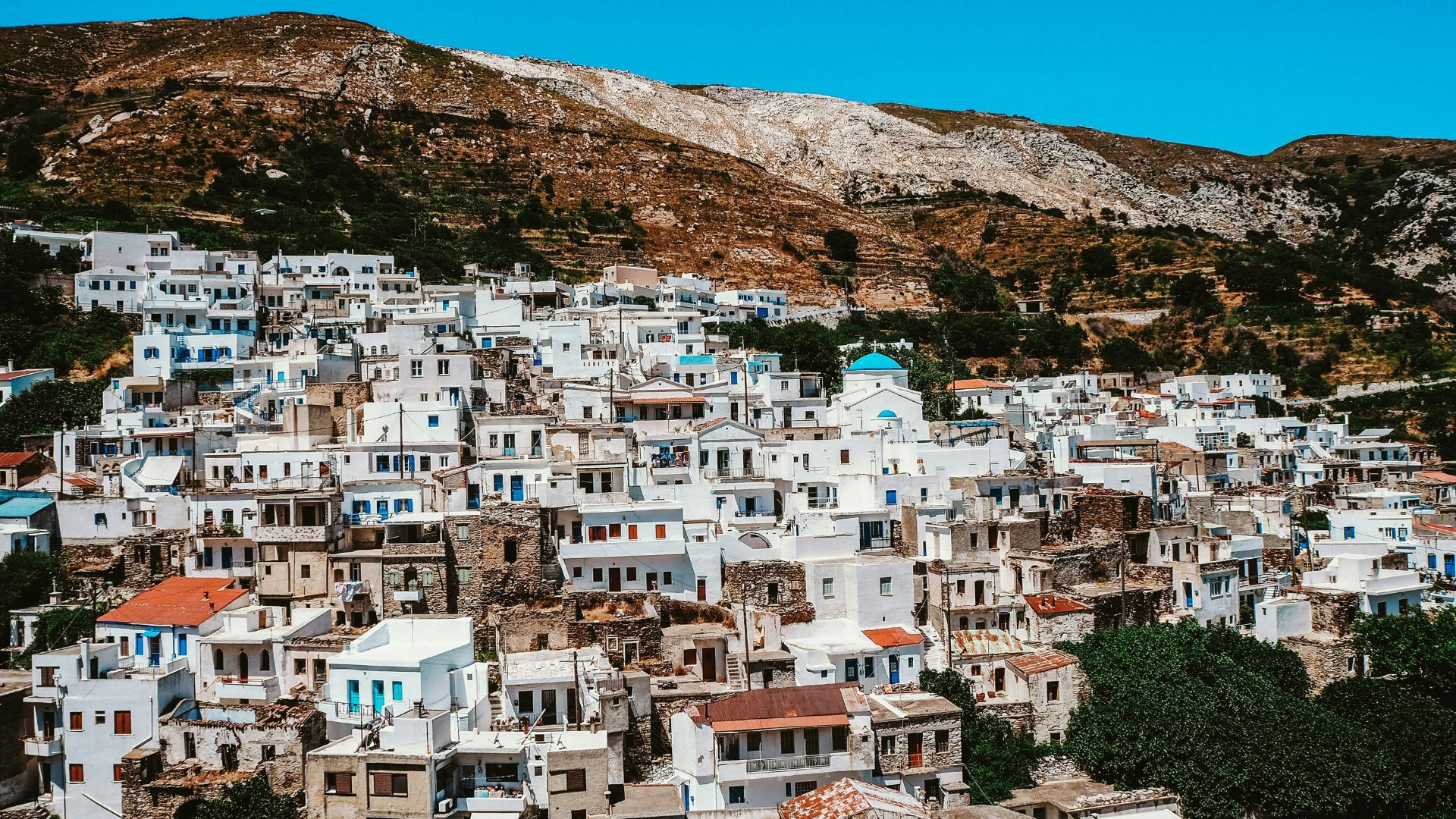
History Beyond the Parties: From Minoan Ruins to the Acropolis
Let’s be honest—there’s a whole lot more to Mykonos than just its wild parties. This island actually fits into a much bigger story that winds through the Greek islands and all the way to Athens.
Some folks say the Cyclades used to be a crossroads for both Minoan and Greek civilization. On Crete, I wandered through the Minoan Palace of Knossos. It’s honestly just a quick flight or ferry from Mykonos.
I learned about Europe’s oldest civilization there. It’s kind of wild to stand in the ruins and imagine what life looked like thousands of years ago.
You can get to Athens by plane or ferry too. The Acropolis rises right above the city, and, trust me, it’s way more impressive in person than in any photo.
After leaving Mykonos, I stood in front of the Parthenon. I couldn’t help but think about the path from ancient island ruins to these massive city monuments.
Even Corfu, tucked further west, brings its own mix of Venetian, French, and British architecture. Still, if you ask me, Mykonos is pretty much the perfect spot to kick off a trip into Greece’s rich and layered history.


